Pets are not just animals but also companions, friends, and family members. This is why people want to be buried with their pets.
However, in the United Kingdom, there are a few laws on this matter. Although it may seem like a sensitive topic, it’s important to have all of your bases covered when you die so that you can make your final wishes known.
Woodland or green cemeteries now offer many pet owners the opportunity to be buried next to or with their pets. Whereas traditional cemeteries and crematoria may refuse a family permission to spread or bury pet ashes with a loved one, there is no clear-cut law that bans the practice in the UK.
In this article, we’ll take a look at the laws and regulations around being buried with a pet in the United Kingdom. We’ll also provide some advice on what you should do if you want to be buried with your pet. Let’s get started!
Reading this from the USA?
Read about being buried with your pet in the States in this article instead.
The first thing to note is that there are no specific laws in the United Kingdom that deal with being buried with a pet. However, there are a number of regulations that come into play depending on the location where you want to be buried.
Generally speaking, local authorities have the power to refuse or approve requests for pet burials. This is because cemeteries and graveyards are usually owned and managed by local councils. As such, it’s important to check with your local authority before making any arrangements.
There are a few exceptions to this rule, however. For instance, if you’re being buried in a private cemetery or graveyard, the owner of the property will have the final say on whether or not you can be buried with a pet.
What Does The Law Say About Pet Burial And Cremation In The UK?
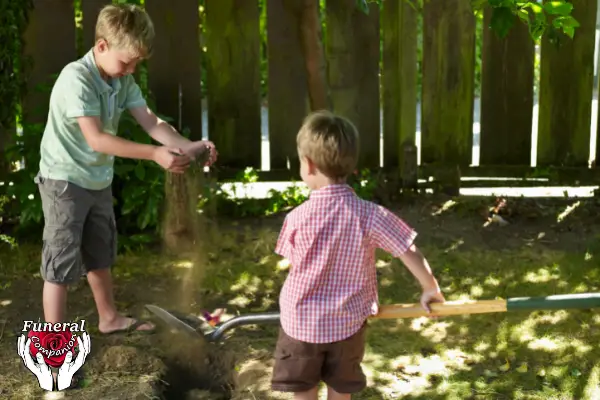
The United Kingdom has some very clear regulations when it comes to the burial and cremation of pets and other animals.
For the most part, the emphasis is on keeping humans and animals separate when burying or cremating them as well as limiting the possibility of an animal carcass polluting the local environment.
Pet cemeteries are highly regulated, often more so than their human counterparts, and these cemeteries are segregated for species. Pet cemeteries will be inspected by the Environmental agency much more regularly than a church graveyard for instance.
Unlike in other countries, such as the United States, home cremation is not going to comply with the regulations for the lawful disposal of animals. However, the law is not as severe when it comes to the burial of non-hazardous animal carcasses on private land.
Can you be buried with your pet (dog, cat, rabbit etc)?
For most established cemeteries the answer would be no, you cannot be buried with or next to a pet, but that is not the case for so-called woodland cemeteries
There is no individual law that states a pet owner cannot be buried with the ashes of their pet, nor are there any regulations that expressly give UK citizens the right to be buried with their pets in any capacity. It seems that the issue hasn’t been deemed important enough to be addressed in the houses of commons.
In the United Kingdom, it is certainly not legal to bury a human and a pet in the same cemetery in most cases. There are regulations in place which prohibit this from happening. This is because the law recognizes that there is a greater risk of contamination when burying animals than humans.
This may be legislation that is in answer to the very many epidemics the United Kingdom has faced in terms of foot and mouth disease or bovine spongiform encephalopathy (BSE). These diseases have been linked to huge depletions in livestock in the British Isles and the government understandably wants to limit future occurrences.
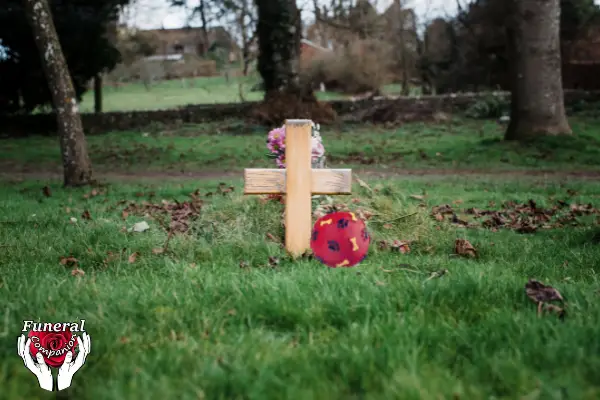
Woodland Cemeteries
There is now a move towards more sustainable and green funeral rites. The idea is to impact the environment in the lowest possible way when a person dies and this has seen the rise of woodland or natural burial sites.
As the name suggests, these are places where people can be buried in a more environmentally sustainable way. Usually, there are no headstones or monuments and the body is simply interred in a shroud or eco-coffin made from biodegradable materials.
Woodland burial sites are not common in the United Kingdom but they are slowly gaining popularity. One of the main reasons for this is that these types of cemeteries allow people to be buried with their pets.
This is because there is no need for a separate pet cemetery as the animal can simply be buried in the same place as the human. This is not allowed in traditional cemeteries, which have specific regulations about the burial of pets.
There are a few things to take into account if you are considering a woodland burial site for yourself and your pet.
The first is that most sites only allow small animals to be buried on the premises and larger animals, such as horses, will not be allowed. Penwith Pet Crematorium seems to be an exception.
The second is that you should check with the specific site beforehand to see if they allow pets to be buried there as some sites do not allow this for environmental reasons.
If you are looking for a more sustainable and environmentally friendly way to bury your pet, then a woodland burial site may be the right choice for you.
Steps To Take If You Can Be Buried With Your Pet
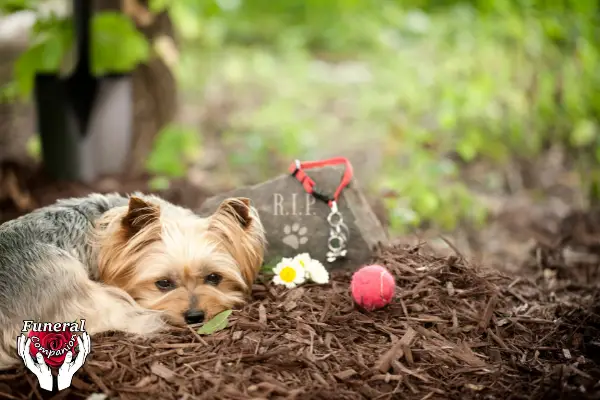
If you are planning to be buried with your pet, there are a few things that you will need to take into account. Firstly, it’s important to make sure that your pet is cremated first. This is because most cemeteries and graveyards do not allow animals to be buried intact.
Secondly, you will need to make arrangements for your pet’s ashes to be buried with you. This is usually done by having the urn buried in the grave following your own interment. I’ve read that it’s illegal to have pet ashes placed in a casket, but haven’t found any UK regulation which backs that up.
Finally, you will need to make sure that you have the permission of the owner of the property where you want to be buried. This is usually the local council or private cemetery owner.
If you are planning to be buried with your pet, it’s important to start making arrangements as soon as possible. This is because there aren’t too many places that allow this and so those cemeteries and graveyards can often be booked up for many years in advance.
So, what should you do if you want to be buried with your pet?
The best thing to do is to start making inquiries with your local authority, private cemetery owner, or funeral director. They will be able to advise you on the best course of action and help you make all the necessary arrangements.
Being buried on private property in the UK

There are no laws that forbid a person from being buried on private property. This is normally only an option for those living in rural areas and whose family will own the land for a significant number of years. This also means that you can choose to be buried with a pet as long as you follow the rules laid out by authorities.
In order to bury someone legally on private land, do the following
When someone dies, it’s important that their death is recorded. The registration of the event can be done by contacting your local register office which will provide information about how to do so in an official capacity as well what happens after you’ve submitted all necessary documents.
It is a criminal offense not to register your death. This means that if you bury someone without registering with the appropriate government office, it could result in fines or even imprisonment!
When someone dies at home, it is important that their death be registered with the authorities in order for there to be legal proof of what happened. If they die while hospitalized or within a nursing facility then this must happen under specific circumstances and according to local law (depending on where you reside). Usually, the staff will be on hand to advise you.
The death should be registered within five days but registration can take place at any time up to nine days later if the registrar is informed that a medical certificate has been issued. If it’s reported to coroners then you won’t get your paperwork until their investigations are finished
Before burial takes place, you must secure permission from landowners. Proper preservation of the body, e.g. embalming, must be carried out by a professional and this is true for cremations as well.
In addition, you should make sure there are no restrictive covenants attached to the title deeds which would prohibit burial on this property. It’s also important to consider access to the grave in the case of the sale of the property or development.
You may be able to avoid disrupting your local water supplies by ensuring that the burial takes place:
- At least 10 metres from any ‘dry’ ditch or field drain
- At least 30 metres from any spring or running or standing water
- At least 250 metres from any well, borehole or spring that supplies water for any use
- Burial excavations should not take place on top of bedrock, and the bottom of your burial cavity must be free from standing water. You also need at least 1 meter worth soil below it to ensure that there’s no risk for flooding or other issues after interment.
Rules To Consider When Burying a Pet in Your own garden
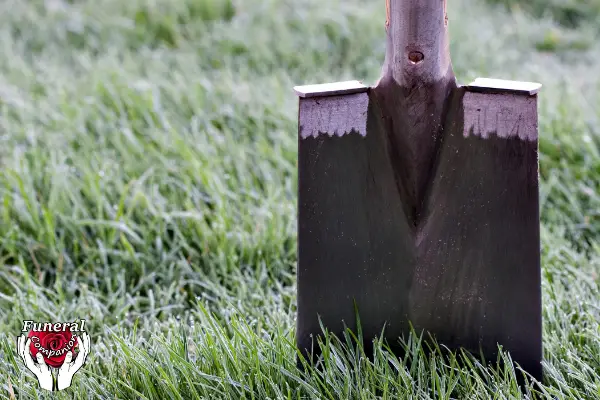
If you’ve found that it’s not going to be possible to be buried with your pet as they have pre-deceased you, then another option is to bury them at home.
It is possible to bury a pet on your own property as defined in the guidance from Department for Environment, Food & Rural Affairs, and Animal and Plant Health Agency(https://www.gov.uk/guidance/fallen-stock#pet-animals), providing that it is done in a way that does not pose a threat to the environment.
One of the issues facing the burial of infected carcasses is that they can pollute both local water sources and the air.
So, for your pet burial, it must be buried a reasonable distance from any watercourse (river, pond, river) and you must take all reasonable steps to prevent the animal carcass from polluting the water.
If you are not comfortable with burying your pet on your own property, there are a number of private crematoriums that will dispose of an animal carcass for you. These crematoriums must be licensed by the local authority and
Tips for burying a pet in your garden
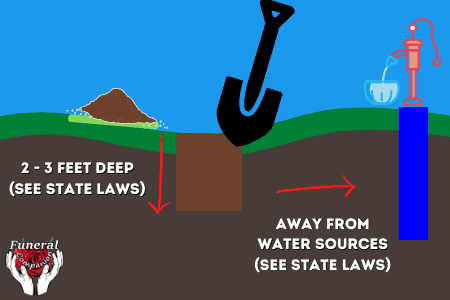
As long as the garden that you plan to bury your pet in is attached to their long-term residence, you are covered by the law. You can’t bury a companion animal on public land without permission or even in a friend’s garden without their expressed permission.
It’s also very important that the animal does not pose any sort of biological risk to the environment. If a pet was involved in the final care of the animal, they may refuse to release the body if this sort of risk exists. This could mean that the animal was given harmful medication for the local environment or is extremely contagious.
If you live in rented accommodation, it would be best to check with your landlord before going ahead with the burial as they may have stipulations in the contract about keeping pets on the property or disposing of them when they die.
Although the government hasn’t actually handed out any regulation as to how you want to bury your pet, my family has always done it in a similar way.
We’ve buried three dogs and two cats in the garden of the family home my parents have owned for more than forty years.
We always wrap them in a blanket, as that will biodegrade, and generally dig the grave so that it’s deep enough to stand up into your waste. That’s because we have a lot of foxes in our area, and to keep them out of the grave we also put a couple of paving slabs or large stones above halfway up the grave when refilling it.
Some other tips which are going around the internet (and I really can’t see where people are getting these as ‘rules) are nonetheless good tips
- Your pet must not be buried near a water source
- It must be beneath 2ft of soil in heavier soils, and 3ft in lighter soils
- You must own, not rent, the land where it’s buried
- The animal must not be hazardous to bury – this can be from treatment previous to their death, such as chemotherapy
Apparently, if you don’t follow these rules you can face a maximum fine of £5,000 or three months’ imprisonment. To be honest, it’s not rocket science and as long as you use your logic you won’t mess it up.
How much does it cost to bury a pet?
Burying a pet in a dedicated cemetery will cost anywhere from £250 to £500 on average. This cost can be increased if you choose to bury them in a special casket or conduct a pet funeral. For those with gardens, burying a pet can cost nothing but their time
How much does it cost to cremate a pet?
A pet can be cremated for roughly £50 £300 depending on its size and species. These costs can be reduced if a communal cremation is opted for. When individually cremated, the owner is returned their pet’s ashes, this isn’t the case for communal cremation.


